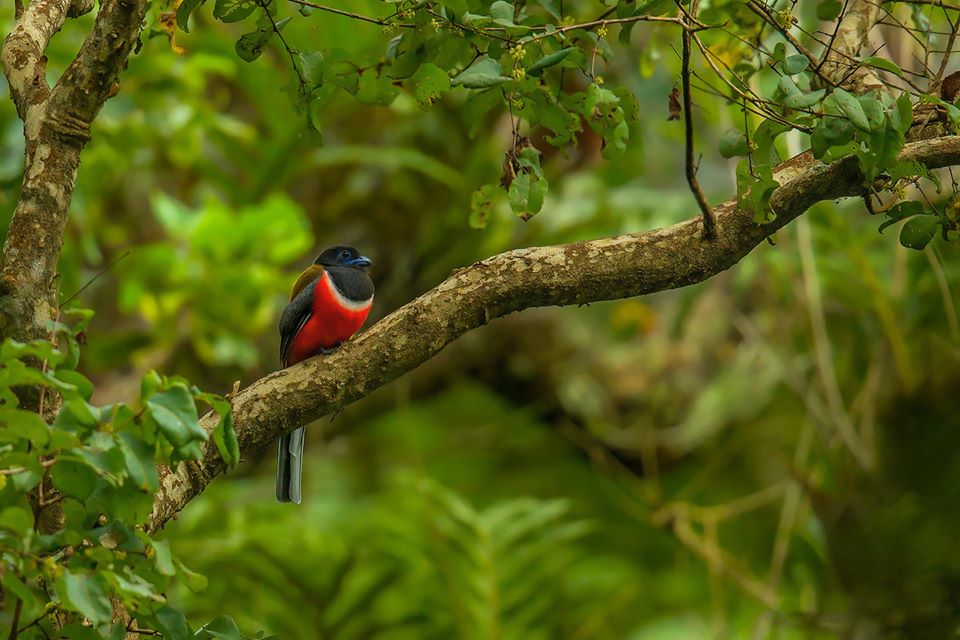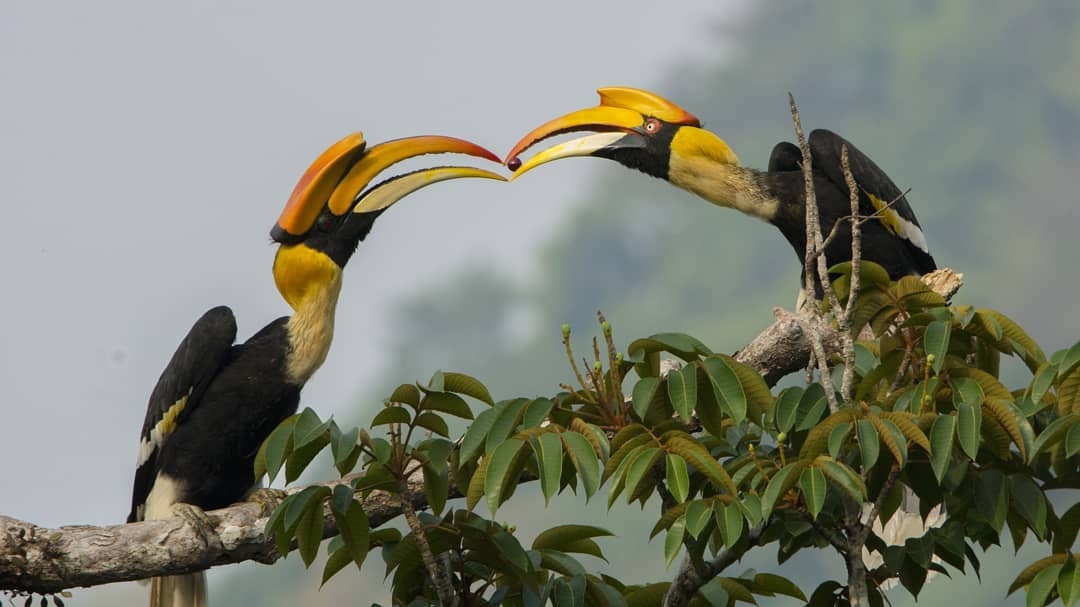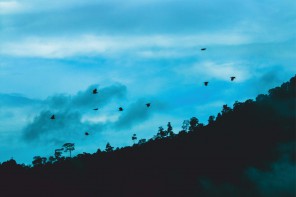Found among the dense, green canopies in the Topslip, Valparai and Manomboly ranges of the Anamalai Tiger Reserve, Malabar Trogon is a noticeable bird for its extraordinary colorful plumage. The sight of the calm and quiet pair of Trogon, sitting in the foliage of the lush, green forest is a captivating sight to the eyes of any bird watcher. The word trogon is Greek for “nibbling” and refers to the character of these birds that gnaw holes in trees to make their nests.
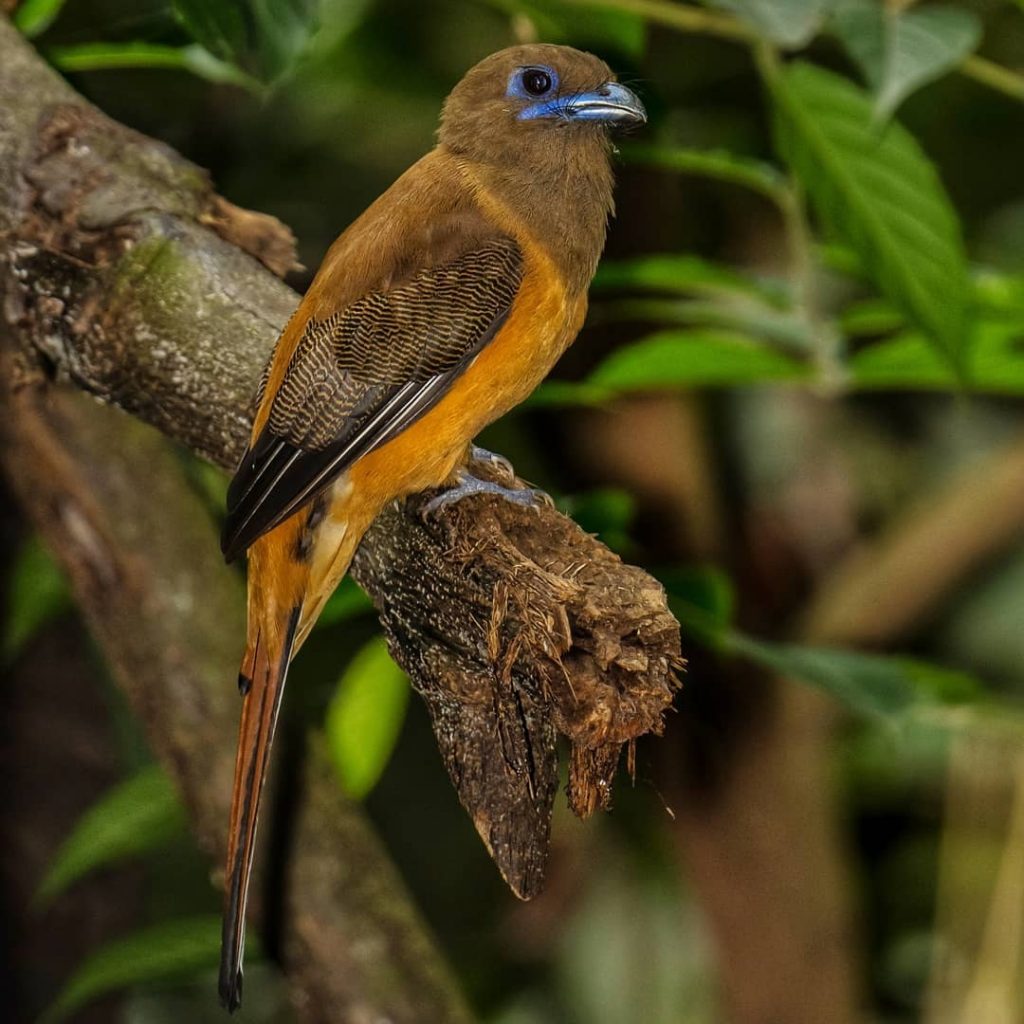
Trogons have a compact body (to the size of a Common Myna) with a long tail. Like most other trogons, these birds are brightly colored and sexually dimorphic. The male bird has a slaty black in the head, neck, and breast. A necklace-like white separates the crimson on the underside. The back is olive-brown to chestnut. The wing coverts are black with fine white vermiculations. Female birds have a slightly darker head and a breast that shades into the olive-brown on the back while the crimson of the underside of the male is replaced by ochre. In both sexes, the beak is bluish as is the skin around the eye. The iris is dark brown and the feet, pale bluish.
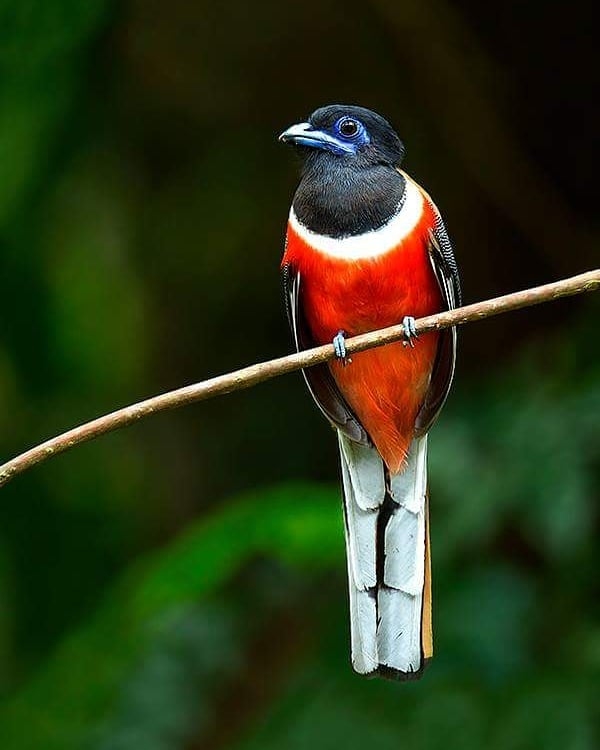
In evolutionary history, Trogons are relatively primitive in their origins. It is an early bird that has its fossil history dating back to 49 million years. Many characters including the unique arrangement of their toes in the foot (their feet are heterodactyl, a feature unique to the trogons, in which the inner toe is turned backward) made people consider them as evolutionarily separate. The modern molecular-based analysis placed them along with the mousebirds of Sub Saharan Africa. Relatively a shy bird, very much aloof in character, they will fly to a nearby hide, camouflaging and merging with the surroundings, when approached close in a forest habitat.
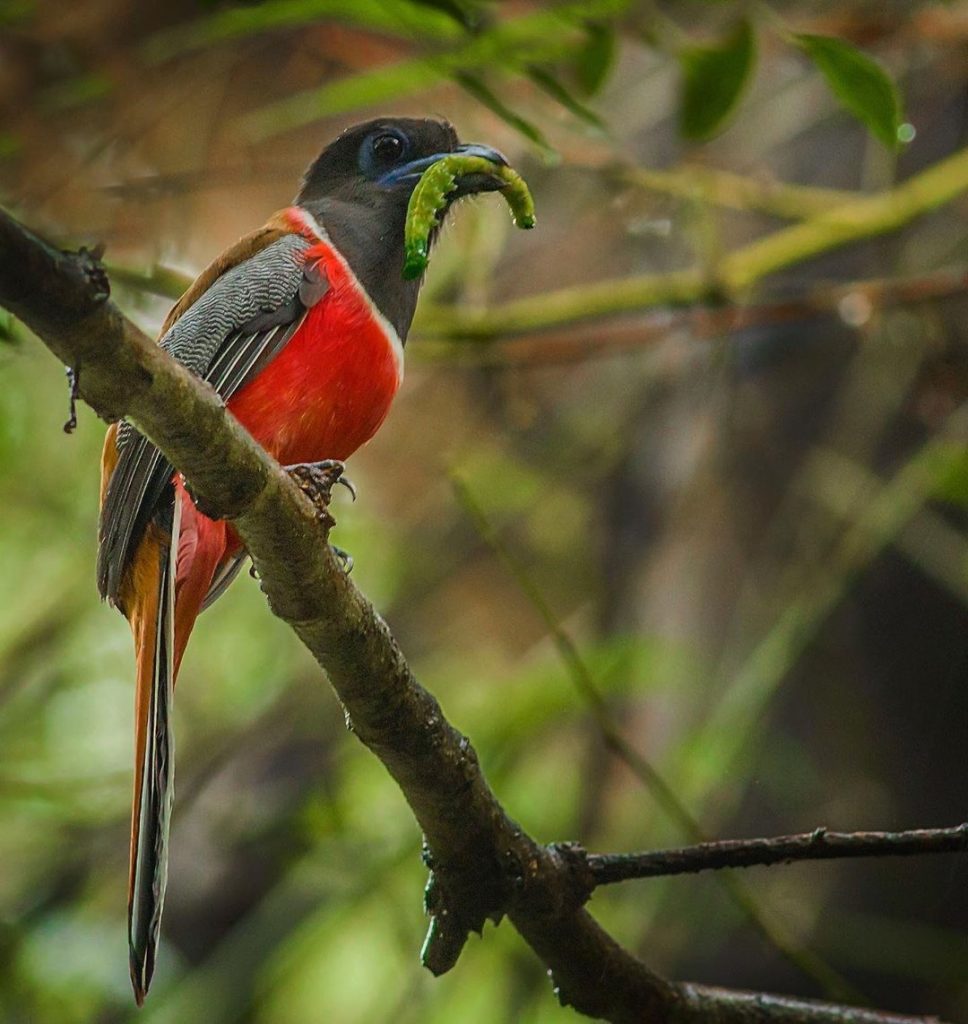
However, as an avid insect eater, it has to sally and capture the flying insects from the air. This is the apt opportunity for a keen bird watcher to sight them. On many occasions, one can see them actively foraging with mixed hunting parties of other insectivorous birds. Though they are less vocal, during the breeding season (usually late January to March), we can hear a soft “coo-…”, at times, probably a song to call out to its mate. Trogons usually perch still, and when alarmed they literally cling to the branches. While making such calls, they sometimes raise and lower their tail.
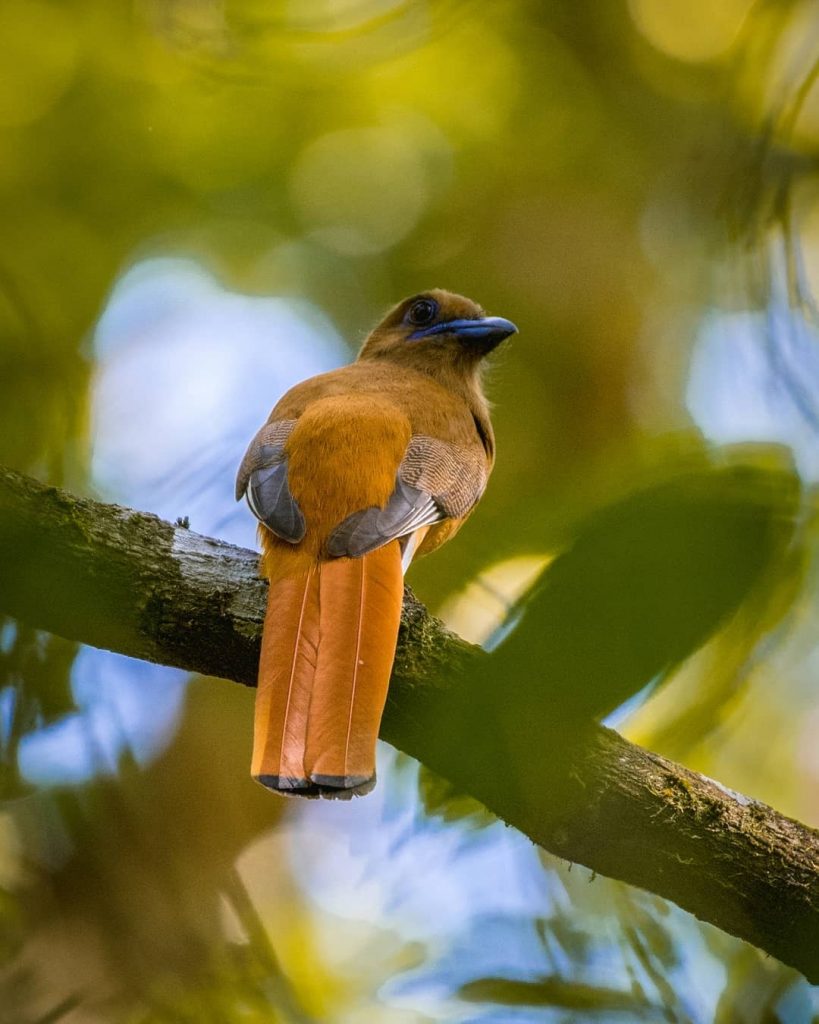
Sadly, when I think about that call of the bird, I have a distinctive memory from my transect days in the Anamalais. It was a field day for me in February 1996. I was doing my bird survey in the Karianshola stretch at Topslip. At the end of my transect count, I reached the forests bordering the Parambikulam Tiger Reserve of Kerala. When I was just about to complete my transect count, I spotted a pair of Trogons perched in a woody climber at a height of about 10 m. above me. Other than the usual birds, the last part of my transect count at 10:00 am was not very eventful and the ambience around was peaceful and very quiet. Trogons have always been my fascination and I sat down quietly to observe them for a little longer.
They sat together as if in a meditative state and I was watching them, mesmerized by their colors and beauty. Suddenly, out of nowhere, a Shikra darted towards them, caught the female by its talons and landed forcefully, pinning the bird to the ground, like an arrow from up in the sky.
The commotion that followed the moment was unbelievable – three Racket-tailed Drongos, two White-bellied Treepies, a couple of Golden Orioles and some other birds flocked to the Shikra as if they were trying to save the female Trogon. The Shikra was however smart – some skillful twists and turns, it evaded the flocking birds and vanished into the sky with its prey.
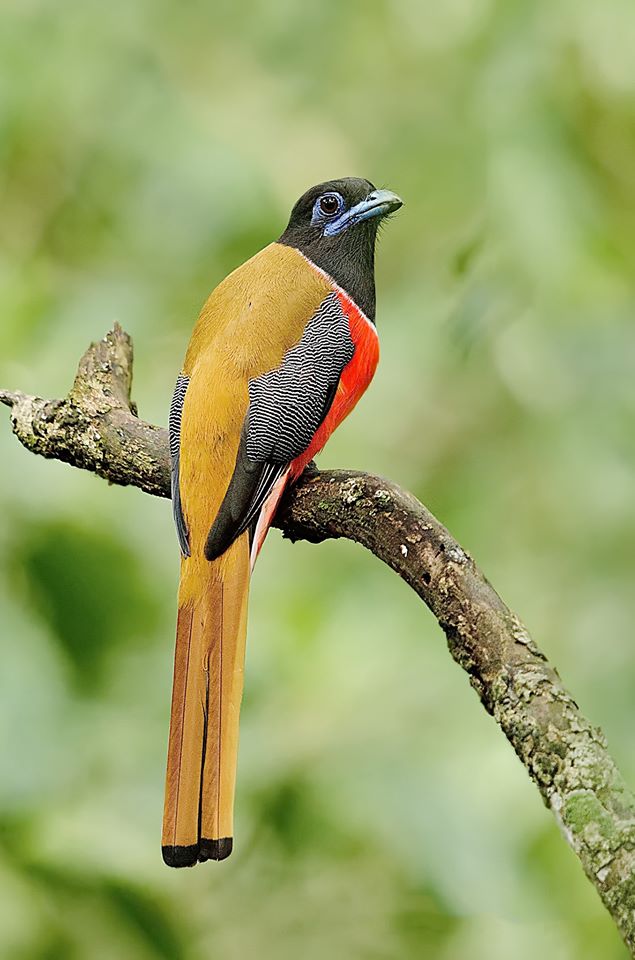
The cacophony of the birds continued for the next few minutes before it became silent again. Soon, I saw the lone male perched in a branch nearby, singing the familiar “coo……” for almost the next half an hour, like a song of melancholy at the loss of his mate. I will never forget that experience and it’s the first thought that comes to my mind at the very utterance of the word Trogon. Trogons, being socially monogamous, with pair bonds lasting more than a breeding season, it was indeed a sad memory, but such is the harsh reality of nature.
About the series – Icons of Anamalais:
A treasure house of biodiversity, the Anamalai’s region of the Western Ghats is home to a spectacular array of wild species, some rare and endemic, that are found nowhere else on Earth. “Elephants Hills” as it is literally translated, the region is one of the most picturesque landscapes in the country that hosts a broad variety of ecosystems ranging from tropical wet evergreen forests to sholas and montane grasslands to dry, scrub jungles.
Home to the large mammals like the Asiatic Wild Elephants, Indian Gaur, the endangered species like the Wild Dogs, Nilgiri Tahr, and Lion Tailed macaques, Anamalai’s is also first to be home to all 16 endemic bird species of Western Ghats.
This series of articles by The Pollachi Papyrus, celebrates the iconic birds and mammals of the Anamalai’s –a unique ecological tract and a global biodiversity hotspot that needs protection and conservation.

